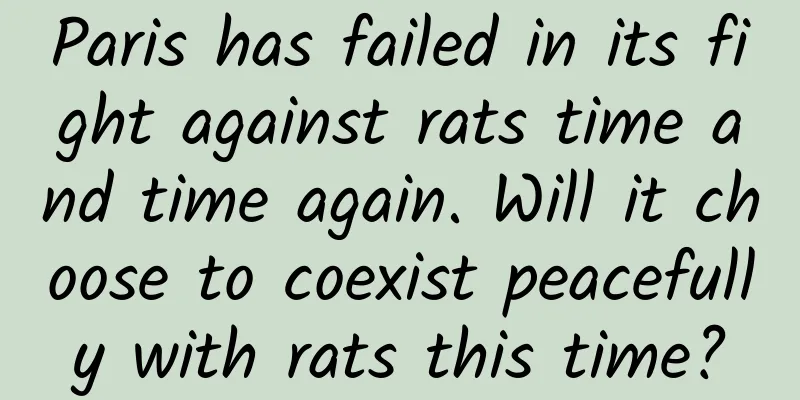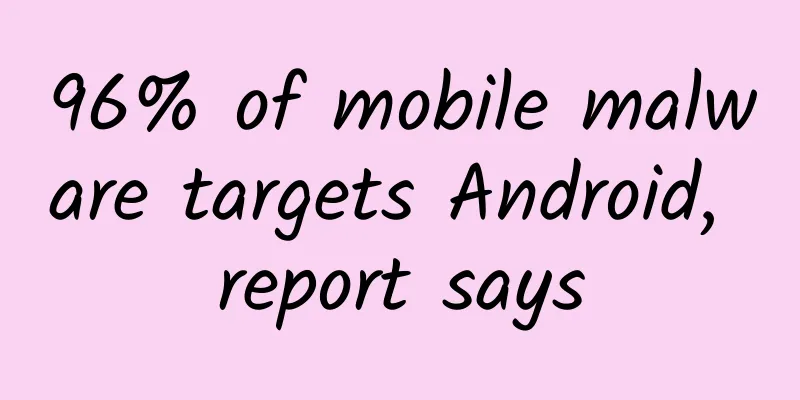Paris has failed in its fight against rats time and time again. Will it choose to coexist peacefully with rats this time?

|
Paris is one of the cities in the world with the most serious rat infestation problem. For hundreds of years, the Parisians have been defeated time and time again in the war between humans and rats. Even today, the government has decided to find ways to "coexist peacefully" with rats. Written by | Xiaoye Paris, the romantic city, has always had a not-so-romantic problem - rat infestation. Even today, you can still see rats emerging from sewers and partying in trash cans on the streets of Paris. The government has invested a lot of financial and human resources over the years to carry out various rat eradication programs, but the results have never been significant. Today, the number of rats in Paris is more than the population of Paris (2.1 million), about 5-6 million [1, 2]. In June 2023, the mayor of Paris took a different approach and proposed that instead of fighting, it would be better for humans and rats to "coexist". For a while, opposition and approval voices came one after another, sparking heated discussions. Why is it so difficult to eradicate rats? Can humans and rats really coexist? Image source: sortiraparis.com Hundreds of years of struggle between humans and mice In fact, many major cities around the world have had some rat problems, such as New York and London, and Paris has been entangled with rats for a long time. Looking back at history, the relationship between Parisians and rats can be traced back to the 14th century, when the Black Death broke out. The Black Death is an infectious disease caused by the plague bacillus, which usually spreads among rats and other wild rodents and is transmitted to humans through the bites of parasites on rats. The Black Death broke out in Paris in 1348 and ended the following year. Paris was the second largest city in Europe at the time, with a population of about 80,000 to 200,000. According to the records of French historian Jean de Venette, from November to December 1348, 16,000 people died in the Saint Denis district in northern Paris alone, and 800 people died of the Black Death every day in the Paris city area [3]. In 1870, the Franco-Prussian War broke out. From September of that year to January of the following year, Paris was besieged by the Prussian army for four months, and the people had to endure bombardment and hunger. As a last resort, the rats in the city became the source of meat for the hungry and cold Parisians. French oil painter Narcisse Chaillou painted a work called "The Rat Dealer" (Le Dépeceur de rats), describing a special profession that was born under a special environment. These dealers sold rat meat to restaurants, and the restaurants would lie to customers that it was other meat when serving the dishes.[4] Therefore, a magazine later joked: "In 19th century Paris, rodents lived in groups in the sewers, but were eventually thrown into the restaurant pots."[1] Oil painting "The Rat Dealer" by Chaillou Narcisse. | Source: Reference [5] Wars and plagues have always alternated in human history. After the end of World War I, a large number of people and materials poured into Paris, and there were also "war rats" who took advantage of the chaos. According to statistics, the population of Paris in 1920 was nearly 3 million, and there were as many as 8 million rats. Not surprisingly, bubonic plague broke out in the northeast and suburbs of Paris, and the number of cases soon exceeded 100. The city government immediately launched the "rat eradication war" and invested a budget of 500,000 francs. In addition to heavily encouraging citizens to participate in rat catching operations, people also realized that clean environmental sanitation would help eliminate rats. The authorities stipulated that citizens could only pack garbage on the streets within a specified time every day, and added garbage recycling trucks and other measures. At the same time, scientific rat eradication came on the scene in line with the times. Founded in 1885, the Pasteur Institute has done a lot of research on plague and designed different methods for rat eradication experiments, including fumigating sewers with poison gas, artificially isolating a type of Salmonella (Danysz) as a biological weapon to eliminate rats, and so on. The severe rat problem also caused the French to reflect, with one writer writing that "rats are as difficult to conquer as the Germans."[6] Although the rat problem in Paris has been alleviated to a certain extent with the improvement of urban management and the development of biomedical technology, it has never been completely solved. Rats are still free as city residents and occasionally even launch a counterattack. Why does Paris keep losing? In the winter of 2016, many European media outlets simultaneously exclaimed: rats have invaded Paris again! According to reports, people can see rats strolling leisurely in groups and foraging in the city parks of Paris at night. "They are not aggressive, but their numbers are frightening." The appearance of rats has caused panic among Parisians, who are very worried that Paris will be "conquered" by rats again. France 24 provided a picture of rat gathering places in Paris, mainly along the river, in the city center parks and in areas with dense tourist populations. | Source: Reference [7] In 2017, the Paris municipal government announced a grant of €1.7 million to launch a new round of rat eradication programs, which will focus on both the environment and rodents. Specific measures include[8]: 1. Replace the garbage bags in the park with closed flip-top garbage bins to prevent rats from entering; 2. Use a "smart" trash can that can compress trash and hold six times more trash than a regular trash can; 3. Increase the frequency of urban garbage collection to keep the streets clean; 4. Seal up the holes made by rats in the park; 5. Those who litter food on the streets or green spaces will face a fine; 6. Use rodenticides, set up more mousetraps, rat traps, etc. in areas where rats are rampant. In addition, the government has launched a mobile app called "DanMaRue" (here). Local residents can immediately locate the location of rats on this app and attach a brief statement of the situation. The Paris Police Department has also set up a "rat-catching police team". After receiving the "alarm" from residents, the police team will go out to catch rats. The main method is to clean the basement or seal the cellar windows with wooden boards to "expel" the rodents. In order to reduce the impact of chemical rodenticides on other animals, soil, plants and water sources, the professional rodent control team came up with a natural enemy strategy: stoats, which was a traditional method used by medieval sailors to drive away rats on ships. After the rodent control experts found the rat holes, they sent stoats into them to scare the rats out of the ground, while a specially trained rat-catching dog was waiting outside. Once the rats were spotted escaping, the rat-catching dog immediately started chasing them. If everything goes well, the rat-catching team can kill 250 to 300 rats a week. In 2018, the Paris government announced that it had carried out 4,269 “interventions” against rats since 2017[9]. The program has continued to this day, but the results are not ideal. The only success is to keep the number of rats at around 5 million in recent years. Relevant people have proposed three reasons that affect the effectiveness of rat control in today's environment: First, the EU's "Sustainable Use of Biocides" regulation, which came into effect in 2013[10], sets strict restrictions on who can use rodenticides, the scope of use, and the toxicity of the substances in the rodenticides, in order to protect biodiversity and prevent accidental harm to other animals. The rodenticides specified in the regulation are divided into two categories. One is the lure based on anticoagulant rodenticides, also known as "chronic rodenticides", which cause bleeding in the internal organs of mice after ingestion, thus inducing their slow death; the other is chemical substances, such as aluminum phosphide, hydrogen cyanide, and carbon dioxide, which kill mice by poison or suffocation. In fact, the implementation of the regulation is equivalent to weakening the ability to eliminate rodents. More importantly, it guides the policy objectives of rodent control: instead of exterminating rats, rats should be driven away and confined underground. Secondly, climate change has made winters in Europe warmer and warmer, creating a good environment for mice, which are afraid of cold and love heat, to reproduce year-round. Many studies have shown [11-13] that climate change has made some areas warmer and wetter, which has helped expand the number of small rodents, including mice, and increased their biodiversity. In theory, if there is sufficient food, two sexually mature mice can mate and produce offspring continuously. It only takes one month for a female mouse to become pregnant and give birth. The sexual maturity period of mice is about six months, and the offspring continue to mate. In this way, the number of mice can increase to nearly 1,000 within a year, and to about 46,000 after two years [14].
Changes in human activities are also the reason for the increase in rat infestation. In 2020, the new coronavirus pandemic raged around the world. In order to control the spread of the epidemic in the country, France adopted strict measures such as home confinement and border blockades. As a result, the originally bustling streets of Paris suddenly became empty, and the clever mice keenly felt this change. The epidemic changed the behavior patterns of rodents and boldly expanded from the underground to the aboveground world. In addition, in March 2023, because the French government promulgated a policy to delay retirement, the French people launched a garbage recycling strike as a protest. For a whole month, the center of Paris was filled with domestic garbage and kitchen waste. It suddenly became a paradise for rats, which directly caused serious rat infestation. “Militant Faction” VS “Coexistence Faction” On June 8, 2023, the French newspaper Le Figaro reported[15] that at a municipal meeting that day, when the mayor of the 17th arrondissement of Paris, Geoffroy Boulard, asked the government whether to take more stringent measures to curb the spread of rats, Anne Souyris, the public health commissioner of the Paris municipal government, made a shocking statement. She said that the mayor of Paris, Anne Hidalgo, would set up a team of experts to consider feasible ways for residents and rats to "coexist peacefully." This statement immediately opened up the mind of the mayor, who had been struggling with rats for many years. On the same day, he responded on Twitter, "Paris deserves a better way." This statement was shocking, and many people believed that the government's new plan actually marked the complete failure of Paris's rat eradication campaign. On June 9, the French government announced that it would fund a scientific study: Project Armaguedon[16]. The project involves a number of academic research institutions, including experts from multiple disciplines such as genomics, urban ecology, and epidemiology. It aims to clarify the biology and ecology of rats in Paris, understand the risk of disease transmission by rats, and correct the prejudice of Paris residents against rats in order to achieve the goal of "peaceful coexistence." Souyris also explained that the project's research includes the extent to which humans and rats can coexist peacefully in the most effective way while ensuring that Parisians do not feel uncomfortable. Therefore, the government "needs scientific advice, not political press releases"[17]. The decision of the Paris municipal government was supported by the animal rights organization Paris Animaux Zoopolis. The organization was founded in 2017. Its co-founder Amandine Sanvisens once expressed her clear opposition to the rat extermination in the media. She insisted that rats are not our enemies and the government should not use inefficient but cruel methods to kill rats because "rats are also emotional animals and they can feel pain." For many years, she has advocated following the experimental approach of New York City in the United States and using contraceptive methods to solve the rat infestation. This method can more humanely and gently prevent rats from further expanding. She also said that the organization will do its best to correct the misunderstandings and prejudices of Paris residents about rats, hoping that humans and rats can eventually "coexist peacefully." However, she emphasized: "The peaceful coexistence proposed by the organization does not mean living under the same roof with rats, but ensuring that these small animals no longer suffer, and at the same time we are not disturbed by them." [17] Paris City Councillor Douchka Markovic is the co-founder of the animal rights organization Animalist Party. She has also taken active action to correct people's prejudice against rats. Given European history, when people mention rats, they immediately think of the terrible past such as disease, plague, and the Black Death. Markovic believes that this is a negative association that easily leads to excessive disgust and fear of rats. She once gave a speech at the city council, advocating the use of the neutral animal academic term "surmulot" to replace rats, which would help alleviate the negative impression of rats. In addition, she also proposed a series of more practical urban sanitation improvement plans, such as collecting garbage on the streets in a timely manner every night, so that rats that are active at night will not find any food on the ground and will return to the sewers [18]. There are "peaceful coexistence factions" and there are "persistent fighting factions". In addition to the mayor of the 17th arrondissement of Paris, who has been fighting on the front line of rat eradication for many years, the French National Academy of Medicine (L'Académie nationale de médecine) published an article on its official website in July 2022, providing the public with strong scientific evidence from a public health perspective that, compared with the rights of rats advocated by animal protection organizations, rats that live with garbage and wastewater all day carry a large number of viruses and parasites, posing a higher health threat to urban residents [19]. For example, the Indian flea (Xenopsylla cheopis) that parasitizes mice can transmit infectious diseases including bubonic plague caused by Yersinia pestis, typhus caused by Rickettsia, and Bartonellosis Elizabethii. The urine of rats contains a type of leptospira bacteria, which is spiral-shaped and slender, and looks like a long screw. This is a very fast-spreading bacterium that can survive in the environment for days to weeks after being excreted from the body. Once humans are infected with this bacterium, they will develop leptospirosis, commonly known as "rat disease." In the early stages of the disease, its symptoms are very similar to those of the flu and can be easily ignored or misdiagnosed. If the disease is left unchecked, the symptoms will become increasingly severe and may even be life-threatening. The mortality rate of the disease can reach 10%. According to a study, from 2011 to 2013, 40% of rats in Lyon carried leptospira[20]. Mathieu Picardeau, head of the leptospirosis surveillance project at the Microbiology Department of the French National Reference Center, said that since 2014, the number of reported cases of leptospirosis in France has doubled, from an average of 300 cases per year to 600 cases [21-23]. Other pathogenic bacteria carried by mice include Salmonella, Streptococcus moniliformis (present in mouse saliva), Staphylococcus aureus, Streptococcus pneumoniae, Campylobacter, etc. Mice themselves are asymptomatic carriers and can carry them for life. Once they infect humans, it can easily cause serious consequences[20]. Therefore, the French National Academy of Medicine pointed out that sewer rats in large cities are the real "killers" of urban residents' health, and strict and long-term preventive measures must be taken. Not only should urban streets, parks, and green spaces be kept clean and garbage collected frequently, but rats should also be captured regularly and monitored for pathogens they carry. And "when the number of rodents is too large, every effort should be made to launch a rodent eradication campaign" [24]. Eliminate or coexist, this is a serious question. Paris was once praised as a moveable feast, but now it has become a feast for rats. The war between humans and rats will continue, but for the health and safety of more than two million people living in Paris, the authorities should make more cautious decisions. References [1] https://www.forbes.com/sites/ceciliarodriguez/2023/06/10/paris-infested-with-rats-searches-for-friendly-ways-to-live-with-them/?sh=9ee7c061f179 [2] https://www.aa.com.tr/en/europe/vermin-rodents-pests-les-rats-de-paris/2579975 [3] The Black Death: Natural and Human Disaster in Medieval Europe. By Robert S. Gottfried. New York and London: The Free Press, 1983 [4] https://frenchtogether.com/rats-paris/ [5] https://www.pop.culture.gouv.fr/notice/joconde/04220002262 [6] https://quod.lib.umich.edu/w/wsfh/0642292.0047.006?view=text;rgn=main&fbclid=IwAR0vB0QvCCpK1tHd1NPL7Hk7qpIAB8JsJqh3CHjGKXp7n5jwCYzT_Ii3kDQ#N49-ptr1 [7] https://www.france24.com/en/20161219-rats-paris-france-invasion-war-city-hall-exploding-rodent-population [8] https://www.paris.fr/pages/les-rats-a-paris-le-saviez-vous-6418 [9] https://www.irishtimes.com/news/world/europe/parisian-rats-outnumbering-humans-nearly-two-to-one-1.4061849 [10] https://food.ec.europa.eu/plants/pesticides/sustainable-use-pesticides_en#about-the-sustainable-use-of-pesticides [11] https://link.springer.com/article/10.1007/s00442-020-04810-w [12] https://onlinelibrary.wiley.com/doi/10.1111/1749-4877.12027 [13] https://academic.oup.com/jmammal/article/82/3/652/2372629 [14] https://www.leparisien.fr/paris-75/paris-75005/alerte-aux-rats-dans-les-parcs-et-jardins-de-paris-07-12-2016-6425811.php [15] https://www.lefigaro.fr/actualite-france/paris-un-comite-pour-etudier-la-cohabitation-avec-les-rats-20230608 [16] https://isyeb.mnhn.fr/sites/isyeb/files/atoms/files/2021/02/flyer_amarguedon.pdf [17] https://edition.cnn.com/travel/article/paris-rats-cohabitation-intl/index.html [18] https://www.causeur.fr/paris-verts-douchka-markovic-rats-surmulots-237550 [19] https://www.academie-medecine.fr/wp-content/uploads/2022/07/22.7.15-Communique-PCRA-30-Rats-degout-ENG.pdf [20] https://hal.inrae.fr/hal-02640150/document [21] https://www.pasteur.fr/en/medical-center/disease-sheets/leptospirosis [22] https://research.pasteur.fr/fr/member/mathieu-picardeau/ [23] https://www.youtube.com/watch?v=-uByHarYeMQ&t=2809s [24] https://www.bfmtv.com/paris/rats-a-paris-l-academie-nationale-de-medecine-tire-la-sonnette-d-alarme_AN-202207180594.html This article is supported by the Science Popularization China Starry Sky Project Produced by: China Association for Science and Technology Department of Science Popularization Producer: China Science and Technology Press Co., Ltd., Beijing Zhongke Xinghe Culture Media Co., Ltd. 1. Go to the "Featured Column" at the bottom of the menu of the "Fanpu" WeChat public account to read a series of popular science articles on different topics. 2. "Fanpu" provides the function of searching articles by month. Follow the public account and reply with the four-digit year + month, such as "1903", to get the article index of March 2019, and so on. |
<<: Be careful, "electronic mustard tuber" is increasing your weight and harming your stomach
Recommend
An introduction to Yidian Zixun platform and a display of advertising cases!
Platform Introduction Yidian Zixun is an interest...
The Internet Integration Model and Influence of American Television Media
When the Internet and other emerging media are su...
Xiaohongshu marketing promotion, 13 tips for hot-selling notes!
In January 2019, the number of Xiaohongshu users ...
He used himself as a test subject and invented spinal anesthesia
Using his own body to conduct anesthesia experime...
UPYUN launches CDN real-time performance monitoring
In 2014, entrepreneurs became the protagonists of...
Do self-produced dramas have to rely on fresh actors to be interesting? Sohu Video tells you the answer
Appearance is king, and handsome actors dominate ...
[Smart Farmers] Debunking rumors: Do genetically modified organisms violate the laws of nature?
[Smart Farmers] Debunking rumors: Do genetically ...
Tencent’s three 10 billion ecosystem empowerments, how to master social advertising!
This month, Tencent announced that it will build ...
2020 Su Yinhua "Red Dust Thinking" (65 episodes) video
2020 Su Yinhua's "Red Dust Thinking"...
Self-help guide for "live streaming sales"
Today, I will share three aspects: First, what do...
Become a hacker and wreak havoc in Silicon Valley. The fully evolved "Watch Dogs 2" gives you a freedom different from GTA
The PRISM program and Snowden incident exposed in...
These three stone carvings were discovered, which are very rare →
Survey of Tibetan cave temples reveals rare cliff...
Xiaomi and LeTV are fighting each other? What caused it?
Editor’s Note: The Internet community has been in...
By reading "The Art of War", let's talk about how to promote and operate APP?
I have recently been studying " The Art of W...









